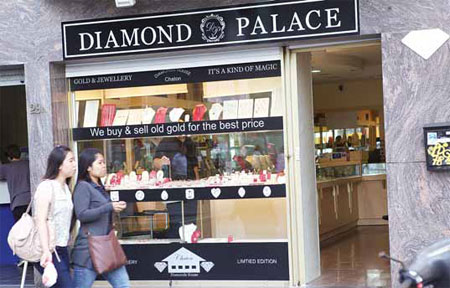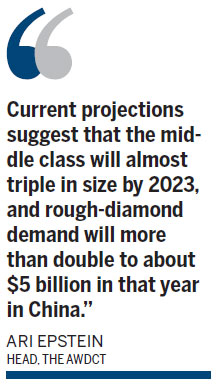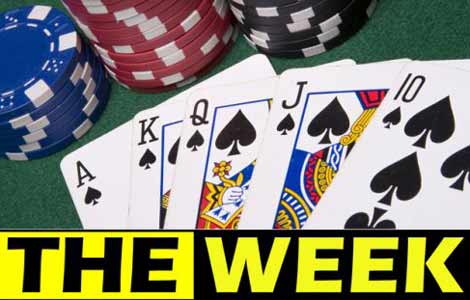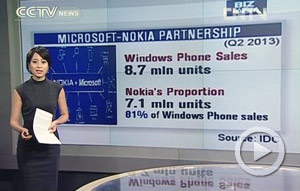Diamonds are this nation's best friend
Updated: 2013-09-09 06:59
By Tuo Yannan in Antwerp, Belgium (China Daily)
|
||||||||
Growing rich Chinese middle class lured by the sparkle of prized gem
|
Eighty-four percent of the world's rough diamonds and 50 percent of all polished diamonds pass through Antwerp, Belgium. Fu Jing / China Daily |
Chu Xiao's office is only 50 meters from Antwerp's central railway station. Through a window, the Beijinger can see crowds of people from every corner of the world flowing in and out of the city every day.
The scenery through that window hasn't changed much in the past century, but the owner of this office changed three years ago from a Jewish businessman to a Chinese one.
Every morning, many Jewish people in their orthodox black robes gather along this street to trade diamonds, just as they have done for hundreds of years. When Chu, 30, decided to quit his job in a Shenzhen-based diamond company three years ago, he made the boldest decision of his life to open his own business in Antwerp.
The Belgian city is the world's main diamond trading center. Given its high share of the global trade, saying that the sparkling stones are an iconic facet of Antwerp's reputation and image is no exaggeration.
In the past decade in the city's two diamond wholesale streets and four bourses - the most diamond bourses in any city in the world - more Indians and Chinese have been seen alongside the Jewish dealers.
Seeing the potential demand in the Chinese market, Chu realized that he had to go to the city where most diamond transactions originate. However, setting up a business in Antwerp was harder than he imagined. When he arrived, almost all of the wholesale diamond traders were Jewish or Indian.
Diamonds and Antwerp have been intertwined for more than 550 years, and the Jewish community has dominated the diamond trade for much of that time. On one of the two trading streets there is a synagogue opposite the Antwerp World Diamond Center.
Now, Indian companies control about 60 percent of the global trade in polished diamonds. Every morning, when the four bourses open, the narrow street where Chu works suddenly fills with people. Everyone seems to know each other. Many million dollars of deals can be made through a handshake or a greeting. On this street, trust is everything.
Among these traders, you will see an intriguing assortment of business types: traditionally dressed Jews looking around alertly, and many Indian businessmen carrying black briefcases and talking into their phones in loud, heavily accented English. This is no different from a busy commercial street in most parts of the world, except that many of the businessmen in this street carry small paper parcels in their suit pockets or briefcases.
These small folded squares of pink or white paper are so thin and light that you would think there would be nothing inside them. However, once you open them you see the unmistakable sparkle of bright diamonds.
Chu laughed when he saw my surprised face. "You are a little disappointed to see such treasure wrapped so roughly? You're holding $100,000," he smiled.
According to the AWDC, the industry-established foundation, each year about 130 million carats of diamonds are mined worldwide. Of those, 84 percent of all rough diamonds and 50 percent of all polished diamonds pass through Antwerp. Diamonds represent 5 percent of total Belgian exports and 15 percent of all Belgian exports outside the European Union, making diamonds the nation's most important export product worldwide.
Among the non-European markets, the largest destination for diamonds is China, which has become the new driving force of the old city of Antwerp.
"In the beginning, I got no recognition at the bourse," Chu says. "Every day now, they greet me with 'Hi, young Chinese man, you're here.'"
According to the AWDC, the annual total value of global rough diamonds is nearly $9 billion. They are set in jewelry that is valued at nearly $50 billion.
It also says that global supply is expected to decline, falling behind expected demand growth that will be driven by China, India and the United States. "Over the next 10 years, supply and demand are expected to grow at a compound annual rate of 2 percent and 5.1 percent."
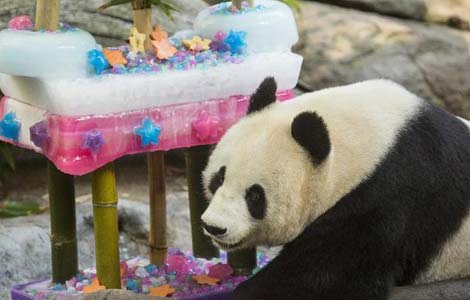
 Panda 'Bai Yun' celebrates 22nd birthday in US
Panda 'Bai Yun' celebrates 22nd birthday in US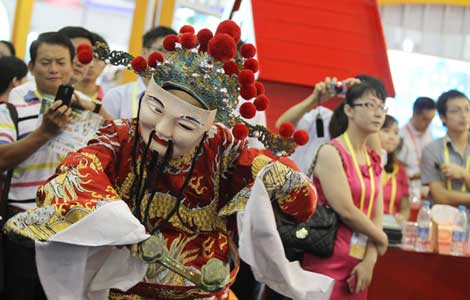
 Exports expand in Aug amid signs of recovery
Exports expand in Aug amid signs of recovery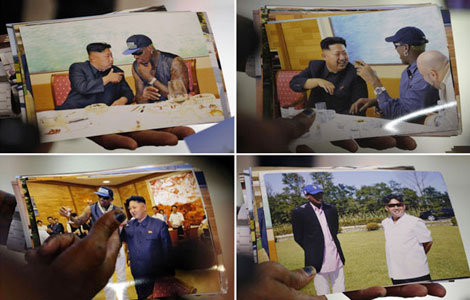
 Rodman back from DPRK without jailed American
Rodman back from DPRK without jailed American
 National Games: Pictures of the day
National Games: Pictures of the day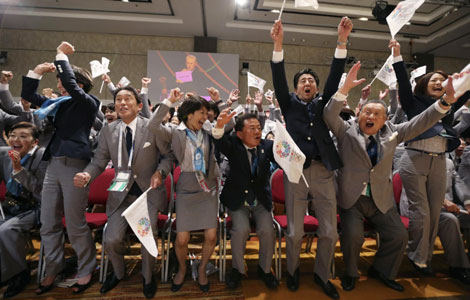
 Abe speech helps secure 2020 Games for Tokyo
Abe speech helps secure 2020 Games for Tokyo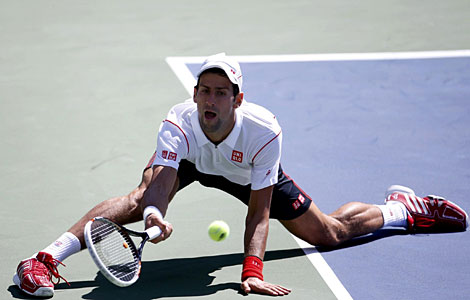
 Djokovic, Nadal set up blockbuster US Open final
Djokovic, Nadal set up blockbuster US Open final
 Xi discusses bilateral ties with Kazakh parliament speaker
Xi discusses bilateral ties with Kazakh parliament speaker
 'Poetic' Italian documentary takes top honor at Venice filmfest
'Poetic' Italian documentary takes top honor at Venice filmfest
Most Viewed
Editor's Picks

|
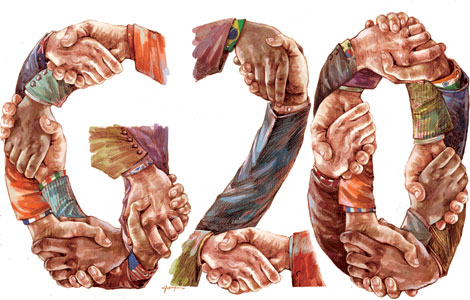
|
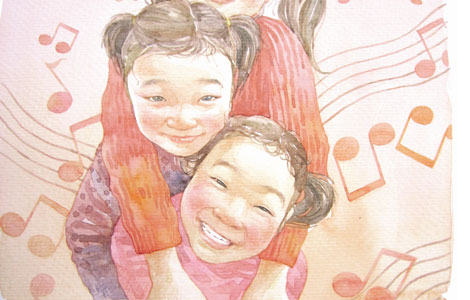
|

|

|

|
Today's Top News
Chinese president arrives in Uzbekistan for visit
China's top admiral visits US
Exports expand in August
Guangzhou to end labor camps
Liu Zhijun associate charged
Network to take care of mentally ill
China to fill gap in aviation sector
Beijing set to host global tourism center
US Weekly

|

|
